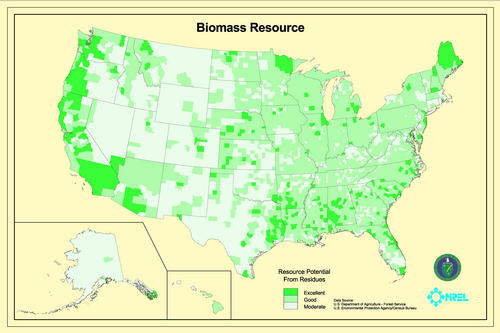 Biomass
Biomass
The term biomass refers to all the Earth's vegetation and many products and coproducts that come from it. Biomass is the oldest known source of renewable energy-humans have been using it since we discovered fire-and it has high energy content. The energy content of dry biomass ranges from 7,000 Btus/lb for straws to 8,500 Btus/lb for wood. Domestic biomass resources include agricultural and forestry wastes, municipal solid wastes, industrial wastes, and terrestrial and aquatic crops grown solely for energy purposes, known as energy crops.
Biomass is an attractive energy source for a number of reasons. First, it is a renewable energy source as long as we manage vegetation appropriately. Biomass is also more evenly distributed over the earth's surface than finite energy sources, and may be exploited using less capital-intensive technologies. It provides the opportunity for local, regional, and national energy self-sufficiency across the globe. And energy derived from biomass does not have the negative environmental impact associated with non-renewable energy sources.
According to the U.S. Department of Energy, "developing a strong biomass industry in the United States will have tremendous economic benefits including trade deficit reduction, job creation, and strengthening of agricultural markets. Growth of the biomass industries can create new markets and employment for farmers and foresters, many of whom currently face economic hardship. Growing biomass energy crops provides new uses for agricultural land currently out of production which can help conserve farm land for future generations. Biomass usage can spur the development of new processing, distribution, and service industries in rural communities. Additionally, using biomass residues rather than disposing of them in landfills can also reduce a major land use problem."
The map below shows biomass potential for the U.S.

To learn more about biomass and bioenergy, visit the Department of Energy's Biomass Program website.


